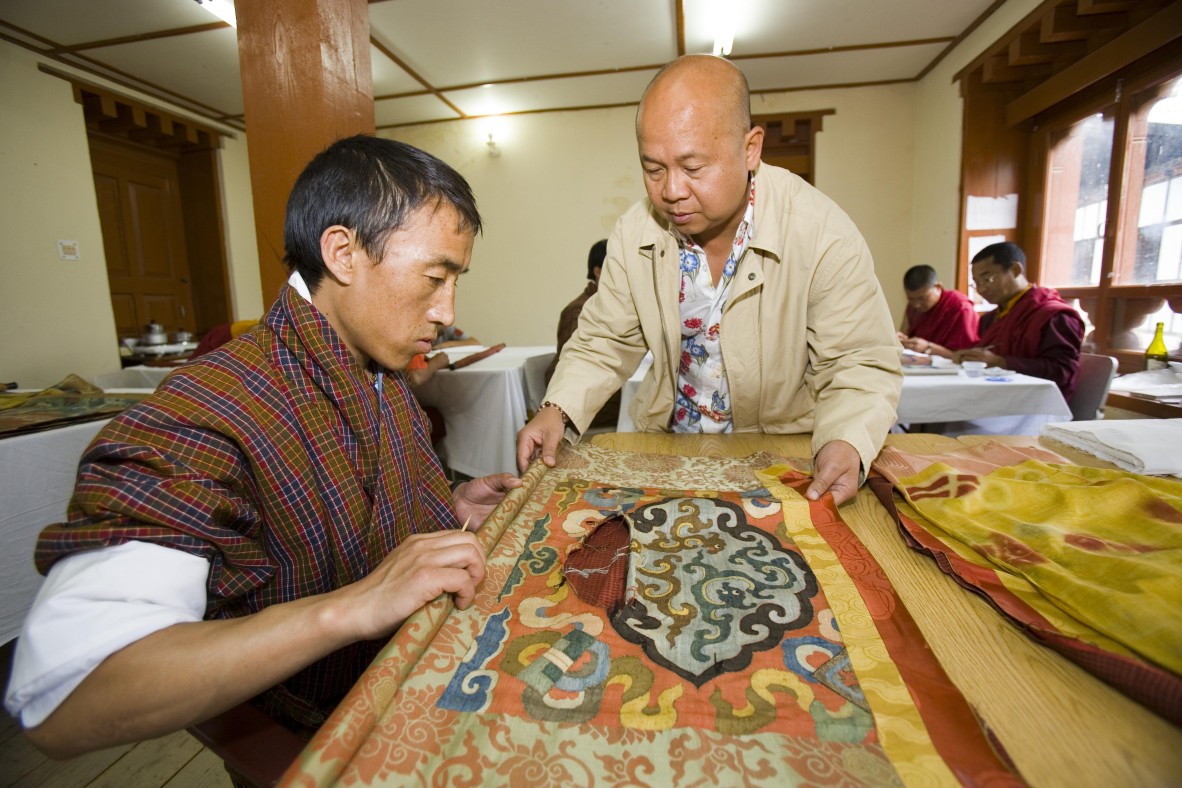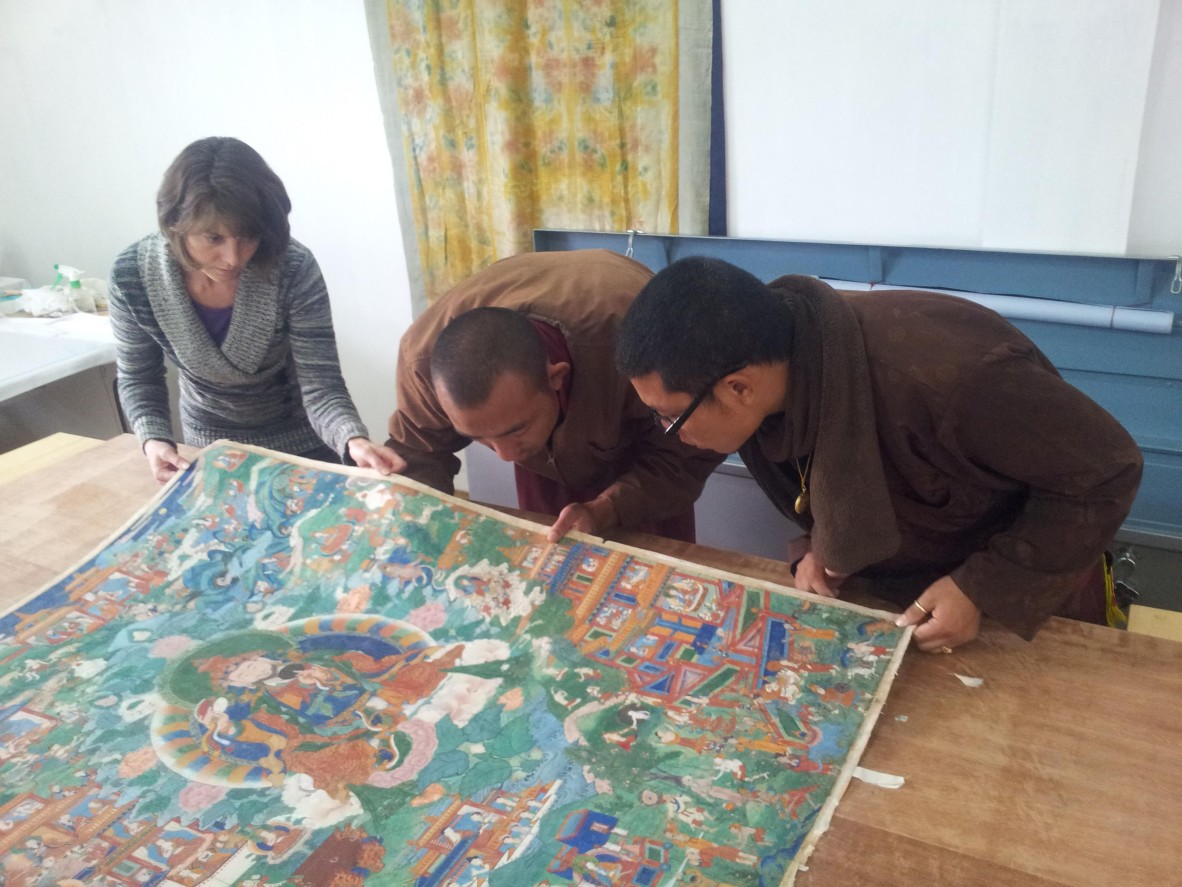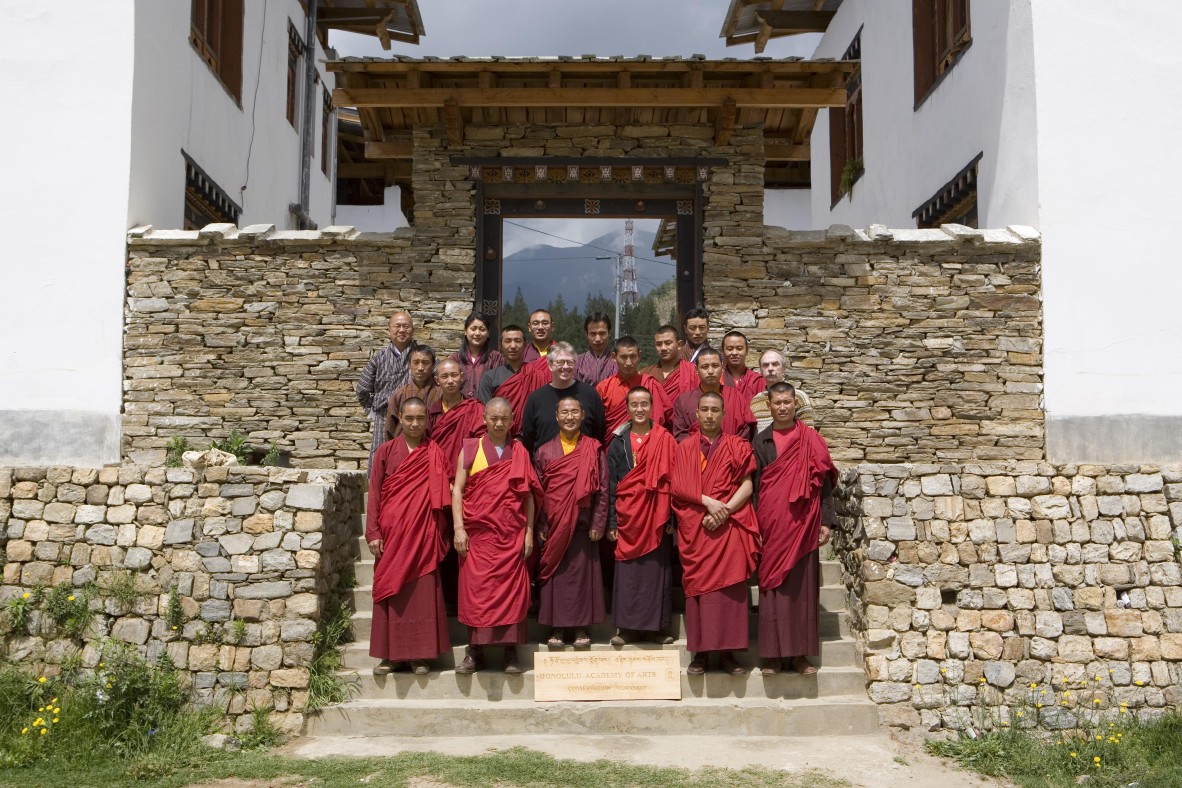Welcome Ephraim Jose, art conservator and 2018 Mittelheuser scholar in residence
By JOL Admin | 14 November 2018
Guest Blogger Jennifer Loubser, Conservator, Preservation Services at State Library of Queensland
In late November 2018 Mittelheuser Scholar in Residence Ephraim (Eddie) Jose will be teaching a masterclass here at State Library to art conservators from across Australia on the construction and use of traditional Japanese drying boards, called Karibari. This event is special for me as I am a Paper Conservator at State Library of Queensland. Together with Eddie, I will be delivering this specialist masterclass. I have been fortunate enough to have been taught by Eddie in many techniques including the conservation of Japanese, Chinese, Korean, and Himalayan scrolls, folding screens, and thangka paintings. He is a leading world expert on the conservation of East Asian paintings. After having trained for over a decade under Japan’s most respected conservation masters, in Handa Kyuseido Studio, Eddie became the first non-Japanese person to be certified by the Japanese Agency for Cultural Affairs, Bunkachō, to conserve Japanese national treasures designated 'Important Paintings'. For the last 30 years, Eddie has worked in America, conserving collections from more than 30 museums internationally. In a special project that spanned ten years, Eddie trained Bhutanese Buddhist monks in the conservation of sacred scrolls and thangka paintings, leaving a legacy of preservation within the Himalayan community.
Art conservation is more often behind-the-scenes than it is in the public eye, and it was a foreign concept in Bhutan until a fortuitous meeting between a Bhutanese curator and Eddie Jose in 1997. When Eddie first saw Bhutanese thangkas, many were cracking or fraying affected by the environment, insects and use. Realising how the conservation of these sacred temple artworks could preserve endangered Bhutanese artistic culture, the director of the National Museum of Bhutan called on Eddie's help.

Eddie Jose teaching Bhutanese thangka conservation workshop participants. Image 2009, courtesy of Eddie Jose.
In Honolulu, I was part of a small group of conservators training Bhutanese Buddhist monks in thangka conservation as we conserved 60 thangka paintings for The Dragon’s Gift exhibition. These sacred living tradition artworks were blessed in ceremonies by monks each day while in conservation and on display. After appearing in several international museum exhibitions, the loaned artworks were returned to their permanent temple homes.
In this long-term cross-cultural art conservation project, I continued working with Eddie and these monks in Bhutan. Years of using the skills they had gained from training with us in Honolulu was showing the rewards of ongoing development in Bhutan. This time we were conserving thangkas belonging to the collection of the Bhutanese Royal family. I remarked how these monks were now capable of taking on the responsibilities of preserving their cultural heritage and were training the next generation of conservator monks.

Jennifer Loubser working with Lopens (monks) Sonam Tshering and Tsering Dendup to place thangka on Japanese karibari drying board. Image 2011, courtesy of Eddie Jose.
Japanese art conservation techniques and materials have improved art conservation treatments worldwide. Bringing Japanese scroll conservation papers, paste, consolidants, tools and techniques to the treatment of sacred thangka scroll paintings has seen exceptional results. The use of traditional Japanese Karibari drying boards allows these thangkas and other artworks to be flattened under tension without anything touching the surface of these spiritual paintings, ensuring these artworks are ultimately respected.
1000 Hand of the Guru: Saving Bhutan’s Sacred Arts, a documentary about Eddie Jose’s work to save and conserve Bhutanese Buddhist thangka paintings was produced in 2016. The film shows how Eddie worked to develop the preservation skills of the thangka paintings' Buddhist caretakers in the remote Himalayas. A self-sustainable conservation studio is being established in Thimphu, and although much remains to be done to secure its permanency, it provides an example of excellence particularly to those working with remote communities.

First thangka conservation workshop participants, organisers and instructors in Thimphu, Bhutan. Image courtesy of Eddie Jose 2004
It is my honour to introduce my mentor, Ephraim Jose, who carries the distinction of realising this exceptional project and art conservation documentary film, 1000 Hands of the Guru: Saving Bhutan’s Sacred Arts. Your chance to view this film and meet Eddie ‘In Conversation’ is Thursday 29th November at State Library of Queensland, Auditorium 1 Level 2, 6:00-8:00 pm. Click here for more information and bookings.
Related Blog:
Comments
Your email address will not be published.
We welcome relevant, respectful comments.